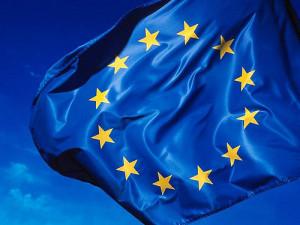European history shows that empires grew by occupying countries outside their boundaries. The Roman Empire encompassed present day Britain, France, Spain, Yugoslavia, Bulgaria, Turkey and Greece as well as other countries outside the European continent. For five hundred years, Romans dominated cultures and blended bloodlines that are evident in genetic analyses today. Experts estimate that 50 million subjects lived under Roman rule.
 Recent Occupations
Recent Occupations

While the period of occupation during and preceding World War II was limited in length, Germany occupied more than a dozen European countries. Military forces carried bloodlines into France, Belgium, Czechoslovakia, Belgium, the Baltic states, Italy, Hungary and other countries. The results of a study reported by the New York Times that Europeans are members of one big family are hardly surprising. The study found that the most common ancestors of Italians lived during the time of the Roman Empire more than 2500 years ago.
Contemporary Europeans share some common genetic markers with ancestors who lived around 500 A.D. The Roman philosopher Seneca noted in his writings that the legions of warriors lived in the regions that they conquered. Campaigns conducted year after year succeeded in expanding the borders of the empire.
Blending Bloodlines
Maintaining a cultural identity has seemed more important to Europeans who can trace their history over thousands of years than to Americans. Citizens of the United States know for certain that their heritage stems from countries all over the world. Researchers Graham Coop and Peter Ralph at the University of California relied on genomic data to study the family lines of nearly 3,000 Europeans as the first experiment of its kind. They acknowledge earlier research that supports a theory that everyone shares ancestry with someone who lived in the last 3,500 years.
Spanish Occupation in America
The United States has not experienced an occupation since the Spanish came to America in the 1500s and dominated the native Indian population. The reputation of “melting pot” for the population of the States is attributed to a French writer who married an American woman and lived here. Americans are interested in family history as shown by the popularity of sites that offer access to research. Finding when a relative came to the States and from what country keeps Internet users busy and interested.
Of more immediate interest to Americans today is the opportunity to use paternity testing as a way to identify the lineage of a child. Courts order them in cases that involve child support or custody, and anyone can voluntarily obtain one to prove paternity. The test checks for DNA matches that link a father and child, and complicated technological measures developed in recent years produce accurate readings at a rate approaching 100 percent.
Summary
With DNA on a cheek swab from a child and a father, scientists can determine whether a biological relationship exists. Bloodlines in Europe have blended over thousands of years to reveal relationships that link residents into one large family.
Image Credit: rockcohen

